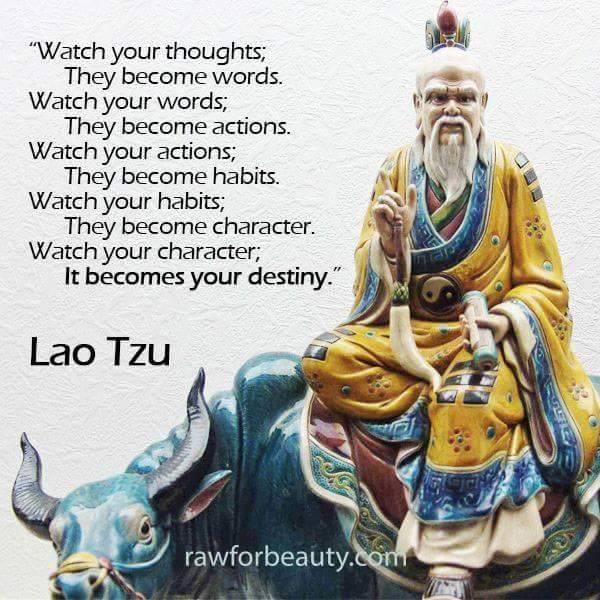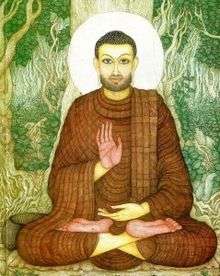REALIZING THE WAY AND CULTIVATING THE HEART

Lao Tzu, picture taken from https://downtheforestpath.com/tag/lao-tzu/
Question
How will Zhang San Feng's courses benefit in 'realizing the way' and how will they contribute to longevity in our human form?
How will the inner arts develop our elixir and how may we apply this to our daily life? When we develop our inner alchemy (microcosm) how does this affect the cosmos (macrocosm)?
Sifu, when we practice all these incredible energy arts and develop our heart/mind do we develop the heart/mind of other beings and can we help in alleviating some of the suffering in the world?
Sifu, do you think that Zhang San Feng practiced the Heart Sutra? As a Taoist priest do you think he blended the Buddhist with the Taoist teachings due to his former training at the Shaolin Temple?
Sifu, what healing did Zhang San Feng practice and is it relevant today?
Why were many masters drawn to the Wudang mountains to 'realize the way'?
Are the arts connected to Laozi and was he the embodiment of MahaKasyapa? If so is that why our school is so special as the transmission from both Wudang and Shaolin are direct from Buddha?
Parveen
Answer
Zhang San Feng’s courses will be conducted from 12th to 15th July in the UK Summer Camp, on 22nd and 23rd September in Puerto Rico, and from 2nd to 8th December in Penang. At the Summer Camp course the focus will be on experiencing and expressing the Grand Ultimate on Wudang Kungfu, in Puerto Rico it is on Wudang Kungfu or San Feng Wudang Set, and in Penang it is on cultivating spirit and nourishing energy.
“Realizing the way” can be interpreted at different levels. For the Taoists on Wudang Mountain who had dedicated themselves to the highest spiritual attainment, it was merging with the Great Void. For us still in the phenomenal world, it is having good health, vitality and longevity. While learning Wudang Kungfu or San Feng Wudang Set, we also develop combat efficiency.
In chi kung, which will be the purpose of the “Cultivation Spirit Nourishing Energy” course, good health, vitality and longevity are a continuous process. If a person is sick, cultivating spirit and nourishing energy at a low level will overcome his sickness, resulting in good health. When he has good health, cultivating his spirit and nourishing his energy will give him vitality and then longevity. We shall use the Abridged San Feng Set as well as methods from Cotton Palm and Dragon Strength for this purpose. Earlier at the UK Summer Camp and Puerto Rico we shall use Wudang Kungfu and the San Feng Wudang Set for combat efficiency.
“Elixir” is the essence of spirit and energy. When we practice inner arts we develop our spirit and our energy. At the “Cultivating Spirit Nourishing Energy” course in Penang, we develop the best of our spirit and energy to build our elixir.
When we have our elixir, i.e. the essence of spirit and energy, we can have better results no matter what we do in our daily life. Whatever we do, irrespective of whether they are physical or intellectual tasks, we do with zest and vitality. We can also continue performing with zest and vitality until our advanced age. At 60 or beyond we can perform better than other people who may only be at 30 or younger.
The Cosmos or macrocosm is spirit and energy. When we have the essence of spirit and energy in our inner alchemy or microcosm, i.e. when our spirit and energy are better than the surrounding spirit and energy, and better than other people’s spirit and energy, we can do better no matter what we do. When we read a book, for example, we can understand better. When we carry on our daily activities, we can perform better. This is because of our better spirit and energy.
The answer to whether we can develop the heart or mind of other beings when we practice these incredible arts, is “yes and no”. When our heart or mind is well developed, i.e. when we have the essence of spirit and energy, we can be an inspiration and greatly influence other people. We can, for example, alleviate some of the sufferings in the world. In this way the answer is “yes”.
On the other hand, other people who do not have the opportunities as we do, will remain low in spirit and energy. Due to our training, although our spirit and energy are very high, their spirit and energy remain low. In this way the answer is “no”.
As the Heart Sutra, being a major Mahayana sutra, was recited at the Shaolin Monastery, Zhang San Feng, who trained at the monastery for many years, would have recited and practiced the Heart Sutra.
Actually Buddhism and Taoism are not what modernized people, especially those in the West, normally conceptualize what a religion is. Buddhism and Taoism are established ways to live lives fully and to attain the highest spiritual achievement when aspirants are ready. Because of cultural, historical, geographical and other differences, Buddhists and Taoists may approach life and spiritual achievements differently from Christians, Muslims and people of other religion or of no official religion. But the basic principles are the same, namely they avoid evil, do good and cultivate their mind or spirit, which may be called soul or consciousness by other people.
Hence what a good Buddhist or Taoist does is also what a good Christian, Muslim or a person of any religion or no official religion does. As Zhang San Feng was a great Taoist priest, I am sure he blended the Buddhist teaching with his Taoist teaching. The Shaolin Monastery was non-religious, though it was highly spiritual. Zhang San Feng as well as other Buddhists, Taoists, Christians, Muslims and followers of other religions were free to carry on their own religions beliefs.
The monks at the Shaolin Monastery when Zhang San Feng was studying there, and the priests on the Wudang Mountain where Zhang San Feng continued his spiritual cultivation, were already healthy. If anyone was sick or injured, Zhang San Feng would ask him to practice appropriate chi kung exercises to have a chi flow to overcome the sickness or injury. If someone was seriously injured, Zhang San Feng might transmit some chi to him.
Chi flow is very relevant today, but not many people have the opportunity to learn it. Transmitting chi from a healer to a patient is also relevant, but again not many people have the opportunity to meet a healer to have chi transmitted to them. I used to transmit chi to some patients, but now I find chi flow more comprehensive and eventually more effective. Not only can chi flow overcome illness, more significantly it gives good health, vitality and longevity.
Not many masters were drawn to the Wudang Mountain “to realize the way” because Zhang San Feng was very selective. The very lucky ones were taught by Zhang San Feng to merge with the Great Void or to attain immortality. Even those who failed to merge with the Great Void or to attain immortality, would have good health, vitality and longevity.
Today many people, including some so-called masters, are drawn to the Wudang Mountain to “realize the way”, not to merge with the Great Void nor to attain immortality, but to learn Wudang Kungfu.
Laozi, which is in Romanized Chinese spelling, or Lao Tzu in English spelling, is the First Patriarch of Taoism. As the teaching of Zhang San Feng was Taoism, the Wudang arts are connected to Laozi.
Mahakasyapa was a principal disciple of Siddhartha Gautama, the Buddha. The gist of Buddhism, as stated by the Buddha himself, is to avoid evil, do good and cultivate the mind.
As Laozi in his own Taoist ways also avoided evil, did good and cultivated the mind, which is called the spirit in Taoism, he was the embodiment of Mahakasyapa, or Mahakasyapa, who was one generation later, was the embodiment of Laozi. Laozi in China and the Buddha in India were contemporaries, but they never met.
Yes, that is one main reason why our school, Shaolin Wahnam, is so special. Although the transmission comes separately from the Buddha and Laozi, the transmission says the same things, i.e. avoid evil, do good and cultivate the mind or spirit.
There are two other main reasons why our school is so special. One is that we practice genuine chi kung and kungfu, and the other is that we systematically transfer what we learn in chi kung and kungfu to our daily life.

Mahakasyapa, picture taken from https://ipfs.io/ipfs/QmXoypizjW3WknFiJnKLwHCnL72vedxjQkDDP1mXWo6uco/wiki/Mahakasyapa.html
The questions and answers are reproduced from the thread Questions to Grandmaster on Wudang Kungfu/Taijiquan & Zhang San Feng in the Shaolin Wahnam Discussion Forum.
LINKS
